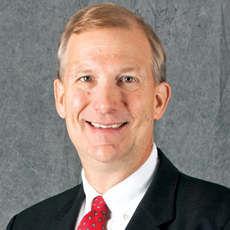
Let’s get one thing out of the way right off the bat: If anyone tells you they know precisely how this new Patient-Driven Payment Model is going to play out, they’re lying.
Top minds across the country are working feverishly to figure out how best to approach it. But it’s like trying to build a jigsaw puzzle when the manufacturer hasn’t put all the pieces in the box yet.
Crucial guidance is still forthcoming from federal regulators. But even when it does come, there will still be uncertainty hanging in the air like a musty, wet overcoat weighing down your arms.
When I last sat for a chat with the head of the nation’s largest nursing home association, he candidly noted that nobody, federal designers included, will know — or could know — how the new payment scheme will fully reward or punish providers.
Regulators might not be quite so candid. At last check, top directors were calmly confident that providers would have enough time to prepare for the October 1 switchover. And they might be right.
But we’ll also note that their supposed ability to predict the future doesn’t have them sauntering to the corner gas station to buy the next Mega Millions winning ticket.
Besides, who knows what happens after October 1? That’s the key, American Health Care Association President and CEO Mark Parkinson emphasized to me. It will likely take months, perhaps as many as six, to see clearly enough what the implications of the new policy are.
You’ll forgive providers if this has them anxious. It should.
Take what has happened with Payroll Based Journaling as Exhibit No. 1. PBJ honorably seeks to keep providers, well, honorable about their staffing levels. No longer trusting about providers’ self-reported staffing levels, federal officials designed PBJ to start recording staffing based on actual payroll records.
That data gathering began in July 2016. The next year, the information began to go public. Last year, facilities started to lose stars based on the audited data. Naturally, mainstream media outlets parsed the data to turn some providers into pariahs, either by direct accusation or implication.
The only problem, Parkinson and other advocates point out, is that the data gathering process has been flawed. Just a few months ago, providers were in full throat, complaining that not all work hours were being counted.
One of the most alarming examples has been when salaried nurses wind up filling in for shift workers. Only the first 40 hours they work are counted toward PBJ staffing figures. That’s a lot of work not getting accounted for.
Another bugaboo pertains to the mandatory taking of a lunch period. Work hours get thrown off, again making providers look like they’re trying to skimp, even if they aren’t.
“It’s just created a perception that there’s less staffing than in the past, and that’s definitely not the case,” Parkinson told me.
Try telling that to the civilian population, especially those who have experienced a public flogging by mainstream media — fairly or not. It’s not what anyone signed up for. But once the federal government sets the wheels in motion, there’s little to do but grit your teeth and bear it.
And vow that next time they won’t let it happen again.
Follow Editor James M. Berklan @JimBerklan.




